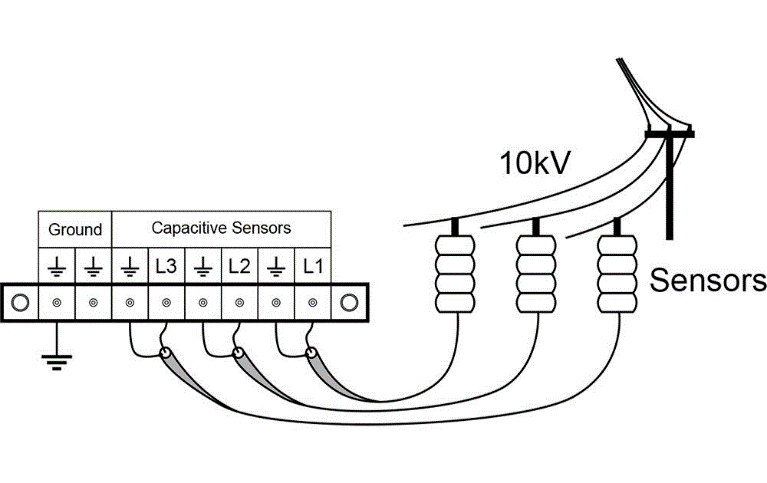The high voltage detector working principle is mainly based on physical principles such as electromagnetic induction, electric field induction, and capacitive coupling. This article explores the working principles of two primary types of high voltage detectors: non-contact voltage detectors and contact high voltage detectors.
How Does a Non-Contact Voltage Detector Work?

Non-contact voltage detectors, often referred to as voltage testers or voltage sensing devices, utilize capacitive coupling to detect high voltage fields without direct electrical contact. The non contact voltage detector working principle can be broken down into the following steps:
Capacitive Coupling: Non-contact voltage detectors sense the electric field generated by high voltage conductors. When a conductor carries voltage, it creates an electric field around it. The detector has an antenna or probe that can pick up this field.
Signal Processing: The sensor within the non-contact detector converts the detected electric field into a measurable signal. This is typically done using an internal circuit that can amplify the signal for easier processing.
Indication: Once the signal is processed, the device activates an indicator—often a light, sound, or vibration—to alert the user to the presence of voltage. Some advanced models may display the approximate voltage level on a digital readout.
Safety Features: Many non-contact voltage detectors come with safety features such as auto shut-off, ensuring the device conserves battery life and remains operational when needed.
Non-contact voltage detectors are widely used because they allow users to maintain a safe distance from live wires, significantly reducing the risk of electric shock.
How Does a Contact High Voltage Detector Work?

Contact high voltage detectors, also known as voltmeters or high voltage probes, require direct contact with the electrical system to measure voltage levels accurately. Their contact high voltage detector working principle involves several key components:
Direct Connection: The detector typically has a probe or leads that must be connected directly to the conductor. This establishes a direct electrical connection, allowing the device to measure the voltage accurately.
Voltage Measurement: Once connected, the device uses internal circuits to measure the voltage present in the conductor. This is usually accomplished with precision resistors and operational amplifiers, which scale down the high voltage to a safe, measurable level.
Analog or Digital Output: The measured voltage is then displayed on an analog or digital readout. Analog devices may use a needle gauge, while digital devices provide a numeric display of the voltage level.
Calibration and Safety: Contact high voltage detectors are often calibrated for specific voltage ranges. They may include fuses or circuit breakers to protect the device and user from surges or overvoltage conditions. Additionally, proper insulation and ergonomic design help minimize the risk of electric shock during use.
Applications: These detectors are commonly used in maintenance, testing, and troubleshooting of electrical systems. They provide precise measurements, making them invaluable for engineers and technicians working on high voltage installations.
Conclusion
High voltage detectors play a crucial role in maintaining safety and efficiency in electrical work. Non-contact voltage detectors provide a safe means to identify the presence of voltage without physical contact, while contact high voltage detectors offer accurate voltage measurements through direct connection. Understanding the working principles of these devices helps professionals use them effectively, ensuring safety in high voltage environments.






